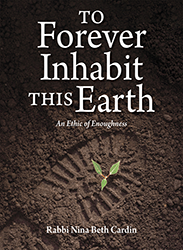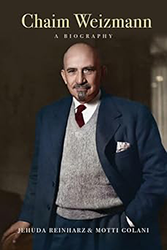It takes chutzpah to write a scholarly treatise on Meir Kahane in the twenty-first century, when so many people who lived through his active years have dismissed him as a “disgrace to the Jews” or disavowed their youthful passion for his cause. While Kahane has present-day admirers, notably in Israeli settler movements or various ultra-Orthodox sects, they’re not usually big consumers of secular material from American academics. So why this book, now?
Shaul Magid’s introduction offers a clue. He recounts visiting a Modern Orthodox bat mitzvah reception, and mentioning to a guest that he was working on Meir Kahane. The gentleman said he agreed with Kahane’s ideas, and his predictions had actually come true, but he should have said things “in a nicer way.” In this brief encounter are the many threads that Magid sets out to untangle: that many contemporary Jews feel a deep ambivalence towards Kahane’s legacy, that his language and style, in particular, were detrimental to his cause, and that Kahane might still be more popular than most Jews like to admit. This story also opens the door to Magid’s larger purpose, which is to explore the evolution of Kahane’s ideas from the late 1960s to his death in 1990 by connecting his thinking to his social context.
Kahane was not some anomalous ‘thug’ who led the JDL on various violent missions. A working-class, yeshiva and university-trained scholar who came of age in the racially-torn America of the sixties, he actually admired the identity politics of the Black Panthers and other militant pride groups. Rejecting the quietist mentality of the post-Holocaust Jews of Brooklyn, he insisted that Jews needed that kind of pride, needed hadar. Between assimilation, killing us from the inside, and antisemitism, attacking us from the outside, Kahane argued that the very survival of Judaism in America was at stake. While his focus on the assimilation problem, on the need for Jews to remain separate, stayed with him and, perversely, even expanded when he emigrated to Israel, his focus on antisemitism in “liberal” America might seem somewhat unexpected. Here Magid’s ability to tie historic debates to modern ones comes to the fore. Perhaps Kahane’s insistence that antisemitism was fundamental to American society anticipated the contemporary arguments of critical race theory, that black oppression is the basis of American society. When Kahane criticized the “internationalism” of the New Left of the sixties when it labeled Israel a colonialist power, this might foreshadow contemporary BDS battles. When Kahane moved to Israel and campaigned for the removal of non-Jews, for the establishment of a theocracy based on Torah, this reminds us of the arguments of the religious far right in Israel today.
Magid is careful to suggest rather than to insist on the parallels between Kahane’s analyses and current events, but by making these connections, he makes his strongest argument for studying Kahane. The man may have been a minor historical figure, but his attention to some uncomfortable truths, and his unfiltered voice, leave us with some history we might need to rethink. Professor Magid writes as an American academic and as a Torah scholar, comfortable with the terminology of both. By straddling these two worlds, he does justice to Kahane’s work, and opens some new worlds for the dedicated reader. No, it’s not easy, but it is worthwhile.
Bettina Berch, author of the recent biography, From Hester Street to Hollywood: The Life and Work of Anzia Yezierska, teaches part-time at the Borough of Manhattan Community College.





